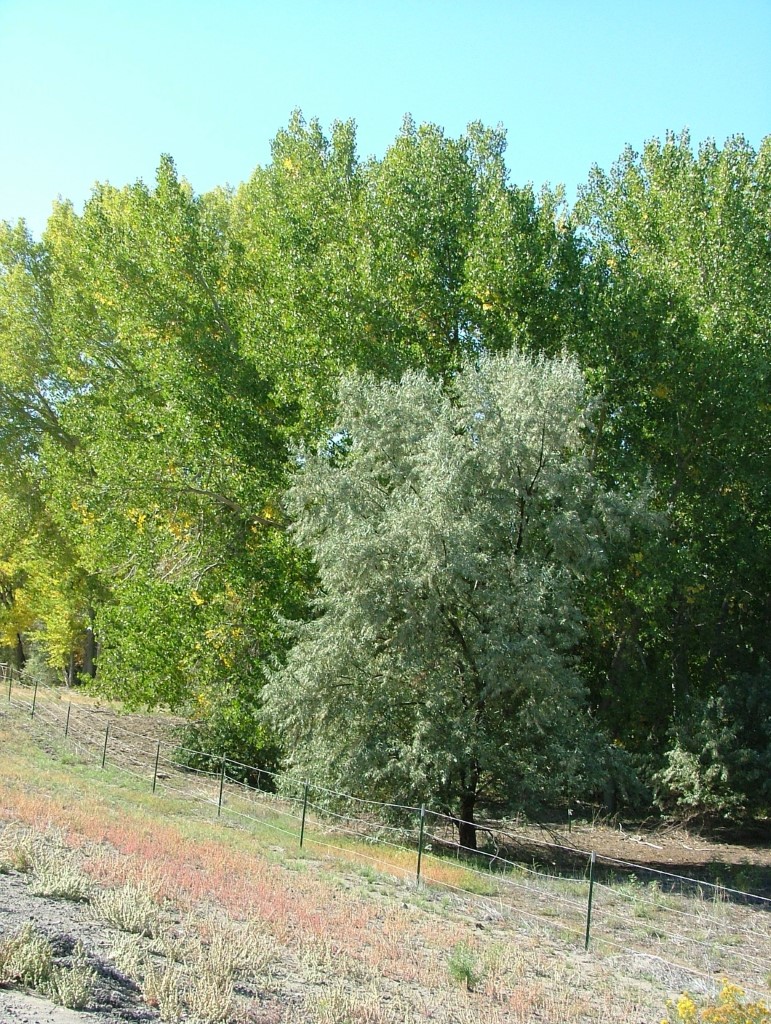
Russian Olive

Description
Russian olive is a deciduous shrub or tree in the Elaeagnaceae (oleander) family. This species may reach between 5 and 30 feet tall. Leaves are alternate, lanceolate, and 2 to 4 inches long. Leaves are gray-green and have small hairs on the upper surface. New growth (stems, leaves, and leaf stalks) and covered in silver scales giving the plant a white or silvery appearance. Stems are reddish and may have sturdy, 1 to 2 inch long thorns. Bark on old growth is reddish and may appear shredded. Flowers are yellow, 0.2 to 0.4 inches wide, and bell-shaped with four petal-like sepals; flowers are highly fragrant and formed in clusters. Seeds are formed in ½ inch long “olives” that mature from silvery-gray to reddish brown.
Origin and Spread
Russian olive is native to Europe and Asia. It was introduced to North America as an ornamental and further spread throughout the continent for use as windbreaks and fencerows. Russian olive spreads primarily by seed but also spreads by roots and shoots when the root crown or trunk is disturbed. It is primarily found in riparian areas, roadsides, and fencerows. In Teton County, it is primarily found in landscapes. It is likely that these plants were ornamentals or accidental introductions through contaminated soil or equipment.
.png)
Management Options
Prevention and cultural control strategies should be utilized as much as possible. Clean construction equipment before entering a new location, and purchase Weed Free gravel and top soil.
There are no biological controls for Russian olive currently available.
Because Russian olive is a shrub/tree with a deep, extensive root system, mechanical removal techniques should be used in conjunction with herbicides. Larger shrubs and trees should be removed by using a cut-stump method (cutting or sawing the trunk and immediately applying herbicide to the stump). Continue monitoring for several years to ensure that the root stock does not resprout. Cut-stump and other herbicide treatments are most effective in fall or during dormancy depending on the herbicide used. Basal bark treatments are effective on small, shrubby plants.
Additional Resources
- Russian-olive. DiTomaso, J.M., Kyser, G.B., et al. (2013) Weed Control in Natural Areas in the Western United States. University of California Weed Research and Information Center.
- Russian Olive (Elaeagnus angustifolia) Washington State Noxious Weed Control Board.
- Elaeagnus angustifolia. North Carolina Extension Gardener Plant Toolbox. North Carolina State Extension.
- Russian Olive Identification and Management (2015) Colorado Department of Agriculture.
- Russian Olive: Field Guide (2025) Missouri Department of Conservation.



